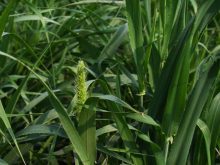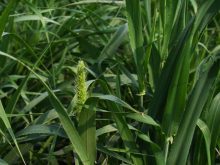Saskatchewan Pulse Growers’ new breeding partner is poised to release its first varieties.
Limagrain has some small red lentil varieties ready for commercialization, Benzon Lorenzana, the company’s head of cereals and pulse research for North America, said during the Ag in Motion show.
They will offer “significant yield improvement” for Canada’s lentil growers, he said.
Brent Derkatch, president of Canterra Seeds, said the yield bump is considerable.
“We’re talking about in the nature of 20 percent higher yields on some of these varieties,” he said.
Read Also

CFIA looks for feedback on proposed seed potato rule changes
The Canadian Food Inspection Agency is looking for public and industry input on proposed amendments to regulations around seed potatoes.
He noted that “for whatever reason” a lot of Saskatchewan’s pea and lentil acres are planted with old genetics. He encouraged those growers to consider adopting the new varieties.
Canterra has been doing seed production on some of Limagrain’s new varieties for a couple of years and may have a limited release of certified seed in the fall of this year for 2025 planting.
A larger portion of the commercial release will happen in the fall of 2025 in time for 2026 planting.
“They are coming,” Derkatch told farmers attending SPG’s breeding presentation.
Lorenzana said Limagrain is busy identifying good sources of root rot resistance from its germplasm in Canada and Europe.
“We’re working really, really hard to stack all those partial resistances and package them in a high-yielding variety,” he said.
The French breeding firm hopes to be registering varieties with “significantly improved resistance” in about five years.
Limagrain is also developing a new herbicide tolerant platform for lentils. It has identified an undisclosed mode of action that will be the foundation of the new system and is currently conducting an evaluation process.
SPG director Brad Blackwell said there is a lot of farmer fear about the new breeding arrangement but two years into the partnership he is very pleased with the results.
“We should have done this sooner,” he said.
There are no “rockstar” varieties just yet, but he thinks growers will agree that they should have done this sooner when the aphanomyces-resistant varieties hit the market in five years.
















